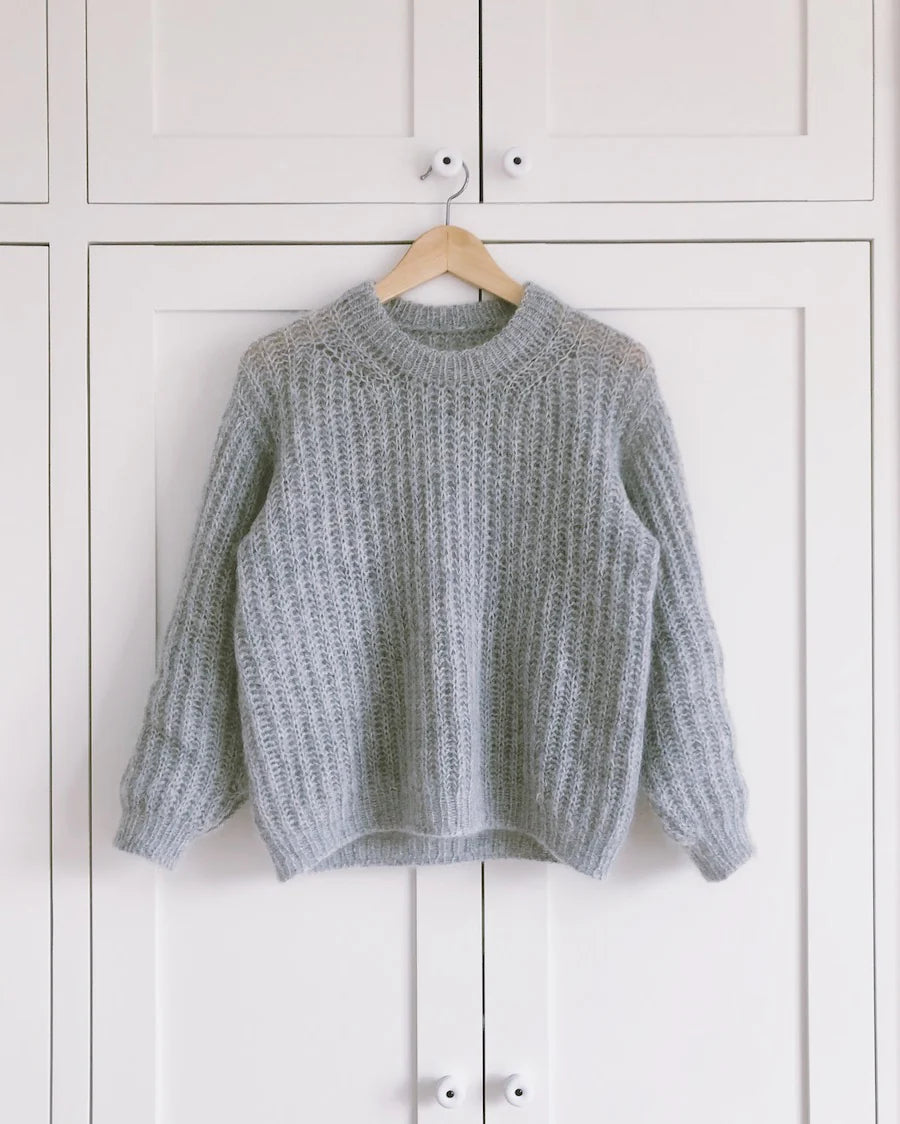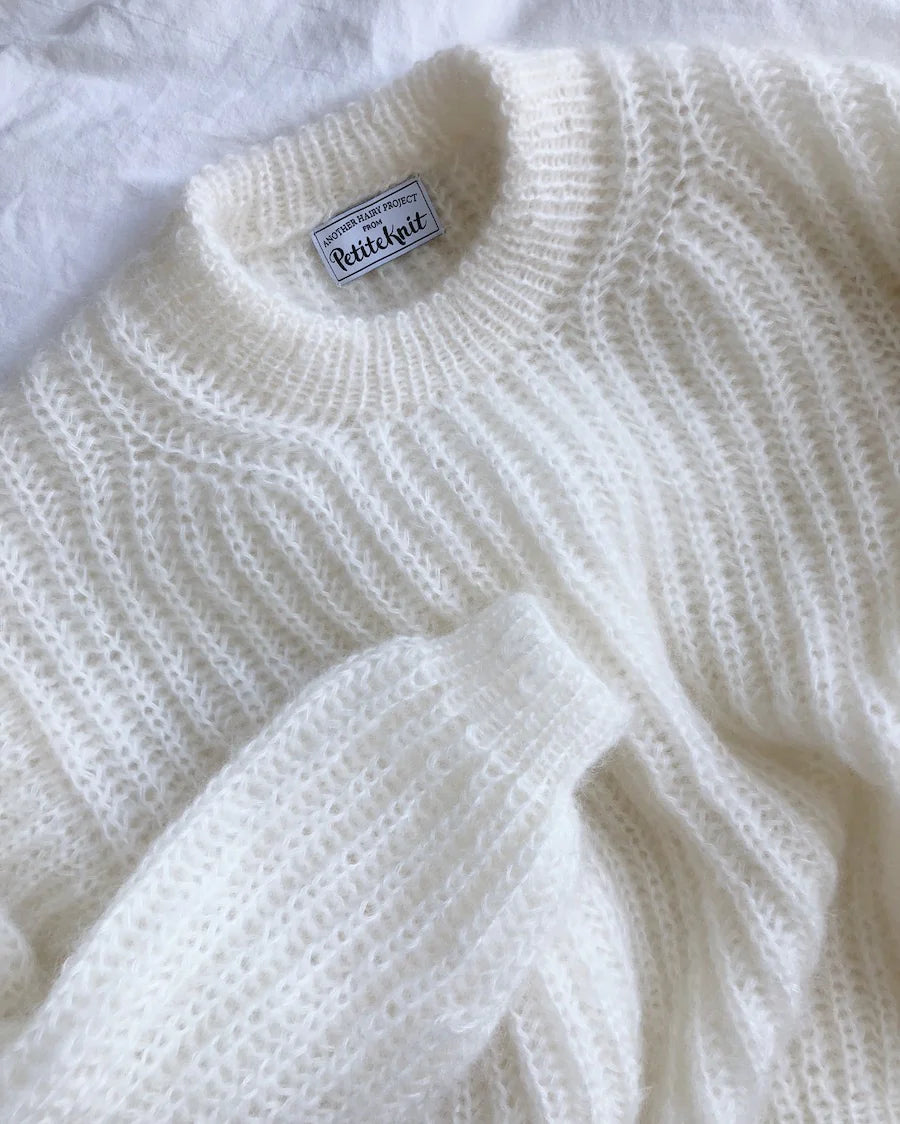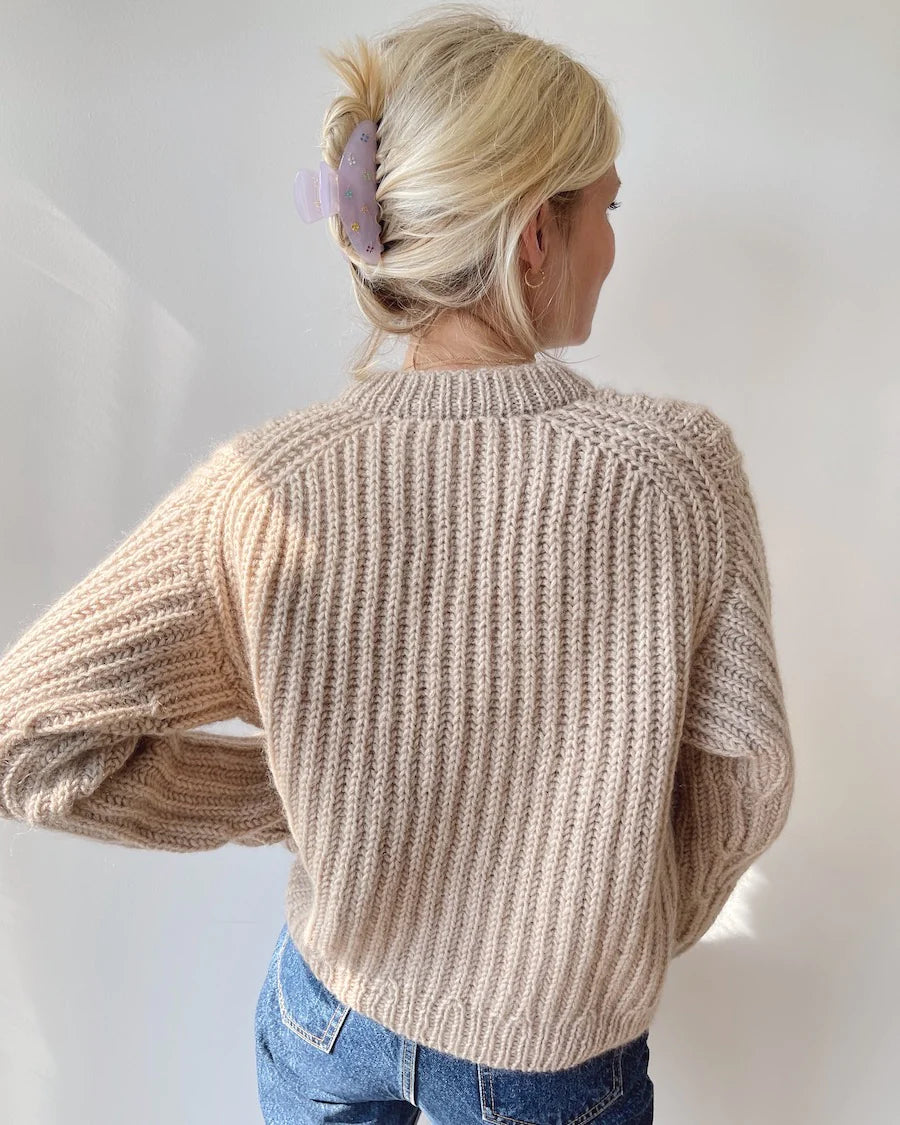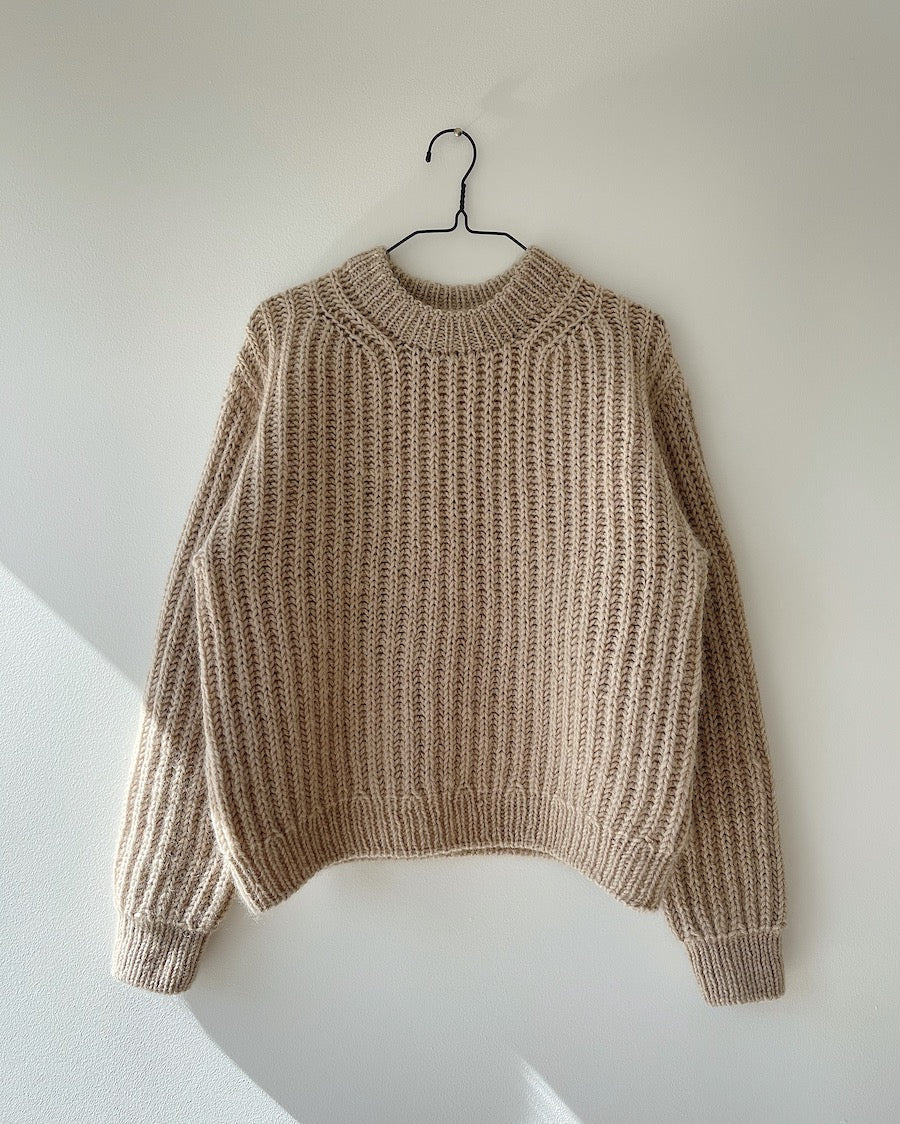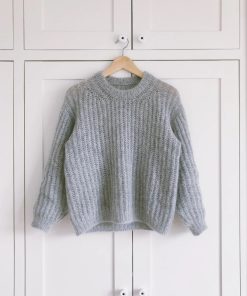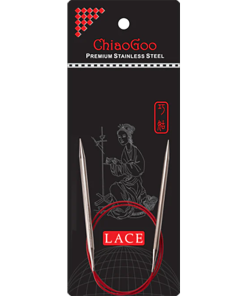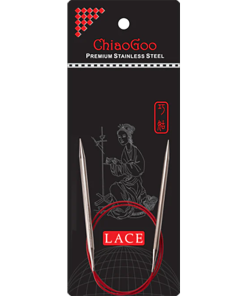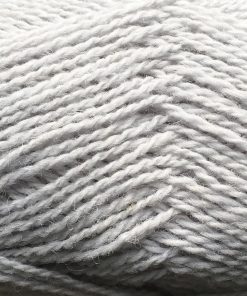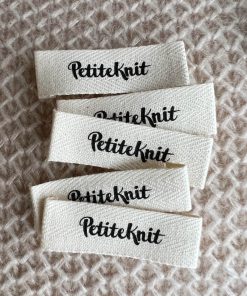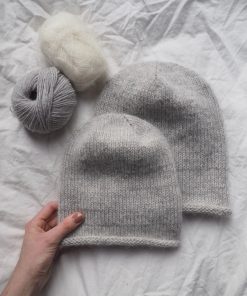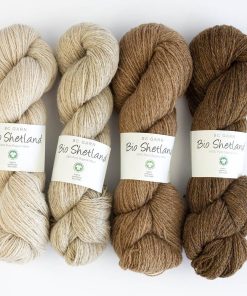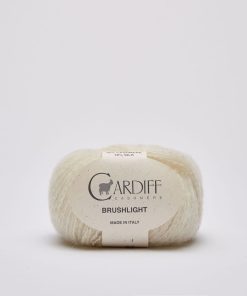PETITEKNIT SEPTEMBER SWEATER PATTERN – HARD COPY KNiTT
$ 6,00 $ 3,60
The September Sweater is knitted from top to bottom in stockinette stitch. First, the back is knitted, casting up stitches for the neck and knitting back and forth on the needle with increases on each side. After this, stitches are gathered up to the shoulders, which are knitted separately and then gathered at the front for the front piece. Under the armhole, the back piece and the front piece meet to form the body, which is knitted in the round on circular needle. Stitches are then picked up for sleeves, which are knitted in the round with increases on a short circular needle. Finally, stitches are picked up in the neck opening to knit the ribbed edge of the neck from. This is placed double and knitted down. The September Sweater is therefore assembly-free.
Make a knitting test before you start to find the needle size that gives you the right knitting strength. Be aware that it is difficult to measure on patent knit, as it is elastic – therefore measure all distances several times.
Size guide
The September Sweater should have a range of motion ( positive ease) of approx. 15 cm in relation to your chest measurement. The sizes XS (S) M (L) XL (2XL) 3XL (4XL) 5XL correspond to a chest measurement measured on your own body of 80-85 (85-90) 90-95 (95-100) 100-110 (110-120) ) 120-130 (130-140) 140-150 cm. The measurements of the finished sweater are given on the front of the pattern. Measure yourself before you start knitting to determine which size will fit you best. For example, if you measure 97 cm around the chest (or the widest part of your body), you should knit a size L. A sweater in size L has an excess width of 113 cm and, in the example mentioned, will provide a room for movement ( positive ease ) of 16 cm.
The model in the picture wears a size XS and has a chest measurement of 82 cm and is 164 cm tall.
Note that patent knit will expand slightly in width when washed and in use. Therefore, you can count on your September Sweater to grow approximately 5-8 cm in excess compared to the measurements indicated on the front of the recipe.
Sizes: XS (S) M (L) XL (2XL) 3XL (4XL) 5XL
Overall width: 98 (103) 107 (113) 120 (133) 140 (150) 160 cm
Length: 56 (58) 60 (64) 70 (72) 75 (77) 77 cm (measured in the middle of the back incl. folded neckline)
Knitting gauge: 12 stitches x 38 stitches in stockinette stitch on needle 5 mm = 10 x 10 cm (note that 38 stitches in stockinette stitch count as 19 stitches in garter stitch)
Guide needles: Circular needle 5 mm (40, 60, 80 and/or 100 cm), circular needle 4.5 mm (80 or 100 cm), circular needle 3.5 mm (40 cm), double pointed needles 4.5 mm
Materials: Suggestion 1: 550 (600) 650 (700) 750 (850) 900 (950) 1000 g Peer Gynt from Sandnes Garn (50 g = 91 m) (one thread) knit together with 100-125 (125) 125 ( 150) 150 (175) 175 (200) 200 g Thin Silk Mohair from Sandnes Garn (25 g = 212 m) (one thread) or Brushed Lace from Mohair By Canard (25 g = 210 m) or Silk Mohair from Isager Yarn ( 25 g = 212 m).
Suggestion 2: 250-275 (275) 325 (325-350) 350 (375) 400 (425) 450 g Thin Silk Mohair from Sandnes Garn (25 g = 212 m) or Brushed Lace from Mohair By Canard (25 g = 210 m) or Silk Mohair from Isager Garn (25 g = 212 m). Note that three threads are knitted at the same time and that the yarn consumption indicates the total yarn consumption.
Difficulty : ★ ★ ★ ★ ★ (5 out of 5)
Professional packing and fast shipping
We offer a broad range of shipping options owing to our long-standing relationships with UPS, FedEx and DHL. Our warehouse staff is highly skilled and will package your items according to our precise and exact specifications. Your goods will go through a thorough inspection and be properly secured before they are delivered. We deliver to thousands of customers each day across multiple countries. This shows our commitment to being the largest online retailer in the world. The distribution centers and warehouses distribution are situated in Europe, as well as the USA.
Please note that orders with multiple items are processed according to the specific item.
Prior to shipment, we inspect the ordered items thoroughly. The majority of orders will be delivered within 48 hours. Delivery is expected to take between 3 and seven days.
Returns
Due to multiple entities such as the factory and the warehouse, we're unable to fully manage stock. The actual stock levels can fluctuate at any moment. Please understand it may happen that your order may be out of stock after the order is placed.
Our policy is valid for a period of 30 days. If you haven't received your product within the 30 days period, we're not able to provide the option of a refund or exchange.
Your item must be in its original packaging and be unused. You must have the item in the original packaging.
Related products
Uncategorized
Uncategorized
Uncategorized
Uncategorized
Uncategorized
Uncategorized
Uncategorized
Uncategorized
Uncategorized
Uncategorized
Uncategorized
Uncategorized
Uncategorized
Uncategorized
Uncategorized
Uncategorized
Uncategorized
Uncategorized
Uncategorized
Uncategorized
Uncategorized
Uncategorized
Uncategorized
Uncategorized
